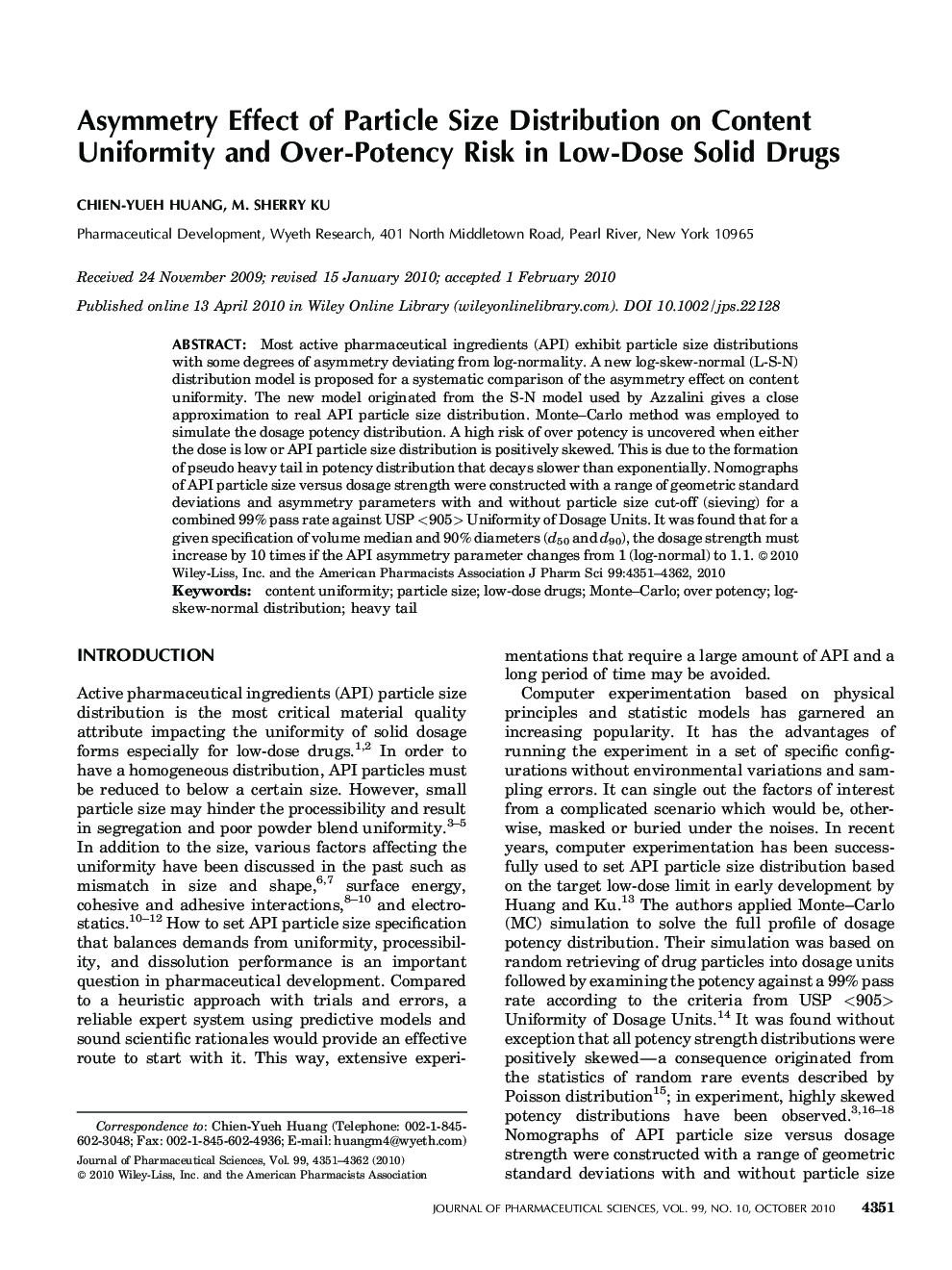| Article ID | Journal | Published Year | Pages | File Type |
|---|---|---|---|---|
| 2487074 | Journal of Pharmaceutical Sciences | 2010 | 12 Pages |
Abstract
Most active pharmaceutical ingredients (API) exhibit particle size distributions with some degrees of asymmetry deviating from log-normality. A new log-skew-normal (L-S-N) distribution model is proposed for a systematic comparison of the asymmetry effect on content uniformity. The new model originated from the S-N model used by Azzalini gives a close approximation to real API particle size distribution. Monte-Carlo method was employed to simulate the dosage potency distribution. A high risk of over potency is uncovered when either the dose is low or API particle size distribution is positively skewed. This is due to the formation of pseudo heavy tail in potency distribution that decays slower than exponentially. Nomographs of API particle size versus dosage strength were constructed with a range of geometric standard deviations and asymmetry parameters with and without particle size cut-off (sieving) for a combined 99% pass rate against USP <Â 905Â > Uniformity of Dosage Units. It was found that for a given specification of volume median and 90% diameters (d50 and d90), the dosage strength must increase by 10 times if the API asymmetry parameter changes from 1 (log-normal) to 1.1.
Related Topics
Health Sciences
Pharmacology, Toxicology and Pharmaceutical Science
Drug Discovery
Authors
Chien-Yueh Huang, M. Sherry Ku,
